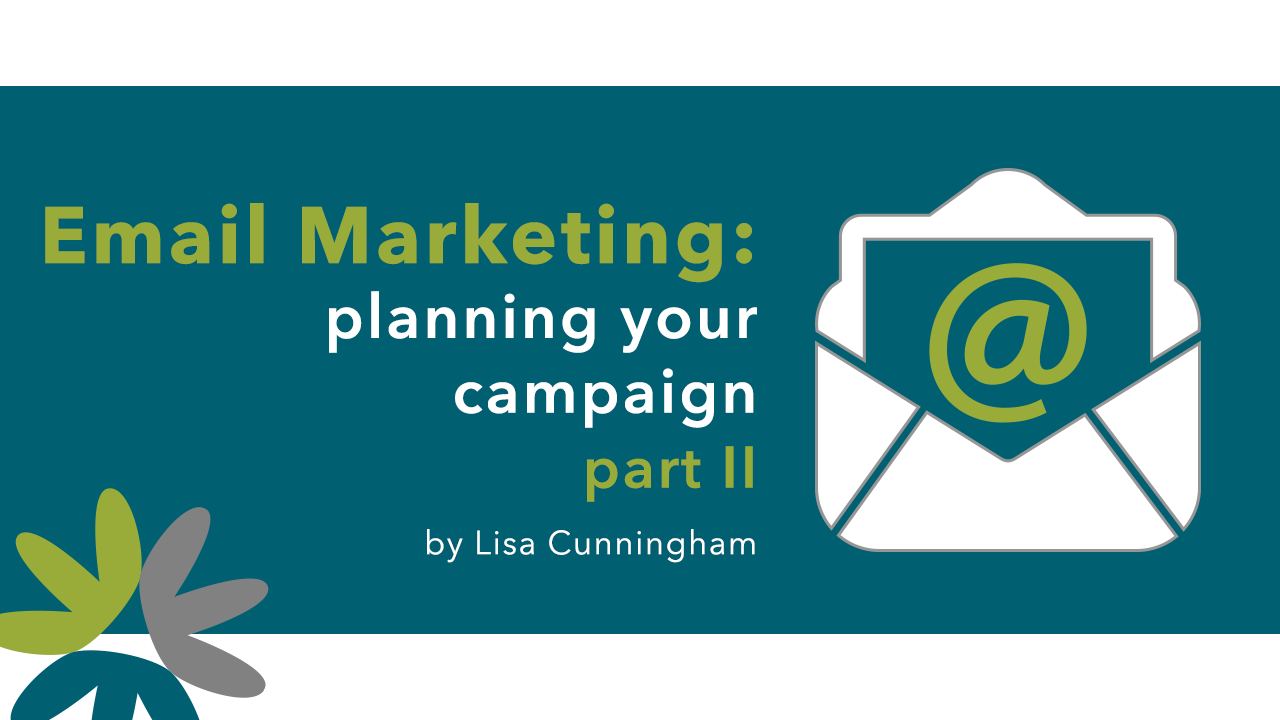In my previous post, I covered some of the basics of email marketing. We covered goals, audience and frequency. Now, we’ll cover the next steps in the development of your email marketing campaign.
Composing Your Message
Since we’ve already determined a goal and audience for your email campaign, we can focus on the content. The key to increasing the chance of people reading your email is to keep the message short, sweet and easy to read. Follow these tips for higher open and click rates.
- Use a compelling subject line.
- Include professional quality graphics and images as needed. (For your protection, only use images that you have rights to use.)
- Use a clean, simple layout to avoid overwhelming your reader.
- Embed links to your website to provide additional details regarding your products and services.
Call to Action
Your message should wrap up with a clear call to action telling your reader what action you want them to take after they’ve read your email. This action should correlate with your goal. Let’s look at our three original scenarios.
- The gift shop that wants to drive traffic to the store for a sale might offer a coupon that says “Bring this code to the store to save 20% off your items.” Or they could say, “Bring mom to the store on Mother’s Day for a free gift.”
- The pool company wants to book appointments with new clients, so they might have a link that goes directly to an online scheduling app. Or they may request new customers call before a certain date to take advantage of a discount on their first service.
- The real estate agent’s goal is to keep in touch and provide value to her past clients so that they’ll think of her first for real estate needs. She could include a link inviting the reader to view current listings or may want to encourage the reader to contact her with questions using a “Contact Me” button.
The action you’d like your reader to take is up to you and may vary by audience. The most important thing is that you include a call to action — make sure it’s easy to follow and aligns with both your goal and who your reader is.
Results and Testing
Your email service provider will have a report feature that you can check a few days after you send your email. You’ll be able to see who received the email, who opened the email, and who clicked on a link in the email. You’ll also be able to see which email addresses bounced. This data is very helpful in determining how well your email performed in comparison to previous email campaigns. You can also use the report data to send follow up emails to those who opened or clicked links in your email.
As mentioned in the previous post, email frequency is not an exact science. The same goes for the day and time you send your email. Choose what makes sense to you and then check the reports. If the open rate is low, try a different date or time in the future. Many email service providers offer an option to test various subject lines and may even allow you to split your list to send emails on varying dates or at different times. Take advantage of these testing options and review the reports closely to determine what works best for your audience.
Unlike traditional mail, email allows you to reach your customers when they’re just a click away from connecting with you online or by phone. And with apps becoming more and more integrated, purchasing decisions can be made and orders placed in just minutes. Utilize the low-cost marketing resource of email to its fullest potential.
For questions about email marketing or help with graphics for your campaign, give us a shout. We’re just a quick email away!

